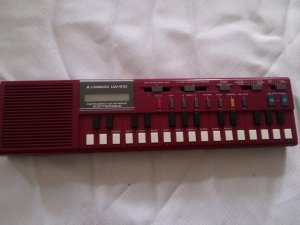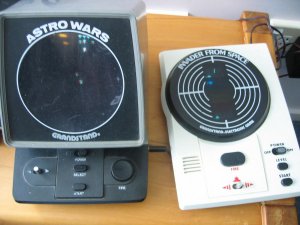vintage calculator
- Thread starter nz boom
- Start date
You are using an out of date browser. It may not display this or other websites correctly.
You should upgrade or use an alternative browser.
You should upgrade or use an alternative browser.
- Status
- Not open for further replies.
jimmyjimmy19702010
Member (SA)
Early 70s model 1971-1973 (when the build quality was best). There are a few AKAs of that one. Some were AC only, some were 4 C cells + AC, the rest were NiCad/AC powered. The Nicads would be dead by now. Some models powered up on AC and the in turn charged the batteries. This version will power up even with dead cells. Other calcs charged the battery directly and wouldn't power up until the battery had attained a certain level of charge. They use a super easy to read 9 digit Panaplex gas discharge display and are a very reliable, long lasting technology better than the later fluro that tend to fade with use. The screens had to internally boost the voltage up to over 200 volts to get the gas to fire.
Some examples use a very expensive reed switch / magnet keyboard that were hand soldered (each key is rated for over 1 million activations in service. Later models used a cheaper membrane keyboard. The plastic keys are 'double shot' moulded. Meaning that the black key colour and the white number are two separate moulds combined so the number can't wear off as it runs down the depth of the key. Modern keyboard keys just have a number printed on top (which wears off).
That version has the 'floating decimal' option which was a slightly later fancy feature! It's a semi reverse Polish notation input. You will notice there is a key with a minus sign and an equal key. There is also another key with a plus sign and an equals key.
To subtract 50 from 100 you do: 100 += 50 -=. So the += key is basically an enter key. So you enter the operant after you have entered the numbers - it's a hangover from the mechanical calculator era. They have a cool battery meter - Sanyo and Canon had identical meters.
This calc would have cost big money back then - $200 approx depending on when it was sold as a price war developed by late 1972.
That calc is desirable for collectors and fully functioning would be worth between $60- $250 depending on condition and the market you're selling into.
Nice find,
James.....
Some examples use a very expensive reed switch / magnet keyboard that were hand soldered (each key is rated for over 1 million activations in service. Later models used a cheaper membrane keyboard. The plastic keys are 'double shot' moulded. Meaning that the black key colour and the white number are two separate moulds combined so the number can't wear off as it runs down the depth of the key. Modern keyboard keys just have a number printed on top (which wears off).
That version has the 'floating decimal' option which was a slightly later fancy feature! It's a semi reverse Polish notation input. You will notice there is a key with a minus sign and an equal key. There is also another key with a plus sign and an equals key.
To subtract 50 from 100 you do: 100 += 50 -=. So the += key is basically an enter key. So you enter the operant after you have entered the numbers - it's a hangover from the mechanical calculator era. They have a cool battery meter - Sanyo and Canon had identical meters.
This calc would have cost big money back then - $200 approx depending on when it was sold as a price war developed by late 1972.
That calc is desirable for collectors and fully functioning would be worth between $60- $250 depending on condition and the market you're selling into.
Nice find,
James.....

Beosystem10
Member (SA)
My mother has that with a Stella label, so the AKAs should - logically - include all of the brands that Philips owned at the time: Philips, Stella, Pye and Spinney (for the club book versions).
She's been using it since it was new, she still has its box, instructions and warranty papers. RPN was common in her profession back then so that was probably one of the criteria that led her away from the ElsiMate or Seiko contemporaries. I think that only HP offered similar machines with RPN and she would have gone for the "traditional, British brand" - even if the name was from Holland and the unit was assembled in Japan.
Great find, I love a classic calculator though my mint, boxed one is a much less desirable device, pictured.


She's been using it since it was new, she still has its box, instructions and warranty papers. RPN was common in her profession back then so that was probably one of the criteria that led her away from the ElsiMate or Seiko contemporaries. I think that only HP offered similar machines with RPN and she would have gone for the "traditional, British brand" - even if the name was from Holland and the unit was assembled in Japan.
Great find, I love a classic calculator though my mint, boxed one is a much less desirable device, pictured.


jimmyjimmy19702010
Member (SA)
You want to talk big, check out this Sharp from the cool, 'real retro' era of the very early seventies: View attachment 12156 You will notice it's too early a model to have a floating decimal! It has a full metal chassis! This unit was used in a government department - it received such heavy use that the plastic feet on the base of the unit have completely worn away! But it still works 100%! Regarding your Pye, I'm trying to think of the AKAs of that model - it sure is a rare one. APF made a similar looking model. The Soundesign 8301 has the same keys as your Pye: The late sixties, very early seventies was an awesome period of calculator production when price wasn't the main concern. Manufacturers were trying to design and produce the best calculator they could. They would then price the unit according to the production costs - usually in the hundreds of dollars!! Back then, if the customer didn't think the quality was there, they wouldn't buy it! They were vastly overbuilt and most still work 100% after over 42 years of use. The price war forced manufacturers to cut costs and quality and longevity of cause suffered. Boomboxes went through the same process in the late seventies to very early eighties. By the late eighties, they weren't even prepared to paint them!! Cheapo brands always come in and undercut the established brands and then every manufacturer ends up making crap to compete. James..... 

jimmyjimmy19702010
Member (SA)
Northerner
Boomus Fidelis
I've got a few of those lol...including Astro Wars...they're great funnz boom said:i think its all part of the technology that changed as we were growing up. hell i just bought 2 video games i couldn't afford when i was a kid
001.JPG

I once saw a handheld pixie tube type calculator about 40 years ago. This when such electronics were virtually unheard of. I never seen another one since, and would probably buy it today if I saw one although there is no utilitarian purpose for such an acquisition.
Lasonic TRC-920
Moderator
WOW, that is a gem, I can hear the clicking of those classic keys now! My dad had a large business calculator. Ran the family business with it.
I remember when the credit card calc's came out, It was a HUGE deal to shrink that down. My father bought me one around 1980 / 81. They were banned in school and I made the mistake of putting it in my wallet (it was credit card right?) and I put my wallet in my back pocket. At the end of the day the calculator had bent and broke. I was so bummed out and my dad was pissed!
I remember when the credit card calc's came out, It was a HUGE deal to shrink that down. My father bought me one around 1980 / 81. They were banned in school and I made the mistake of putting it in my wallet (it was credit card right?) and I put my wallet in my back pocket. At the end of the day the calculator had bent and broke. I was so bummed out and my dad was pissed!
jimmyjimmy19702010
Member (SA)
'Nixie tube' calculators are the most desired of all - if you find a handheld model (rare), grab it!Superduper said:I once saw a handheld pixie tube type calculator about 40 years ago. This when such electronics were virtually unheard of. I never seen another one since, and would probably buy it today if I saw one although there is no utilitarian purpose for such an acquisition.
Finally found a pic of a PYE aka: View attachment 12179
OK, nixie tube. It belonged to my older brother. I remember seeing the small digits through the glass tube and those thin wires inside, and found it sooo very awesome (I couldn't have been more than 8 or 10 years old at the time). The awesomeness was sort of like watching Star Wars for the first time back in the day. There simply wasn't anything like it at the time. I remember sneaking into my brothers room just so I could turn it on and play with it. Probably wasted a good amount of juice and I wouldn't be surprised if my brother wondered why batteries don't last, haha.
Of course from a practical aspect, what use would a calculator with basic arithmetic functions be good for? Nothing now since smartphones and tablets exist. Still, would be cool to have one just for memories sake. However, I wouldn't pay an arm or leg for one since I know the moment I own it, the novelty and nostalgia will wear off in short order.
Of course from a practical aspect, what use would a calculator with basic arithmetic functions be good for? Nothing now since smartphones and tablets exist. Still, would be cool to have one just for memories sake. However, I wouldn't pay an arm or leg for one since I know the moment I own it, the novelty and nostalgia will wear off in short order.
Beosystem10
Member (SA)
Pixie was a brand name on one maker's nixie valves though, perhaps that'll be how the typo came about; subconsciously? 
But Nixies would be on the large side for a handheld device would they not? I've built up clocks with them and even the smallest that are still commonly available - which have only the straight heaters without extra elements for the point and the diagonal - are around 3/16" across with 1/4" needed for their bases. Even assuming that you used a form that allowed the points to be avoided in notation, you'd still be limited to half a dozen places even if you had hands like malt shovels.
Here's one whose diagrams are held at the UKVR board, these are B7G-sized envelopes but I've had the students at making B9G and even full sized octal-based clocks, usually as a punishment for mentioning Shamsung a/f amps and thermionic devices in the same sentence! Over running the heaters of a couple of ECC83s to create a warm glow in an otherwise entirely cold cathode bit of kit is cheating.



But Nixies would be on the large side for a handheld device would they not? I've built up clocks with them and even the smallest that are still commonly available - which have only the straight heaters without extra elements for the point and the diagonal - are around 3/16" across with 1/4" needed for their bases. Even assuming that you used a form that allowed the points to be avoided in notation, you'd still be limited to half a dozen places even if you had hands like malt shovels.
Here's one whose diagrams are held at the UKVR board, these are B7G-sized envelopes but I've had the students at making B9G and even full sized octal-based clocks, usually as a punishment for mentioning Shamsung a/f amps and thermionic devices in the same sentence! Over running the heaters of a couple of ECC83s to create a warm glow in an otherwise entirely cold cathode bit of kit is cheating.

I'm up at the folks' tomorrow so I'll ask Dad to have a climb and see whether the Mam's Stella brand AKA - of the original topic to this thread - is up in their roof. It could be tricky for him since the regs for insulation material rose to 10" from 4", as he had to remove the floor in the loft at that time, to allow for the thicker glass but stuff in boxes that were wide enough to span the stoothes went back up there so the calculator must be there too. If Dad finds that, its instructions are sure to be in the box with it so I'll get a scan from his copier if he gets down from the loft in one piece.jimmyjimmy19702010 said:Finally found a pic of a PYE aka:image.jpg

- Status
- Not open for further replies.


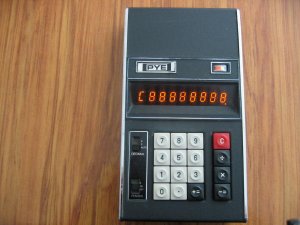
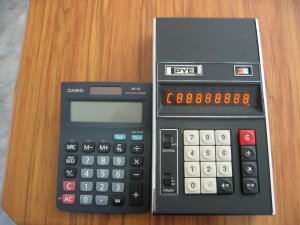
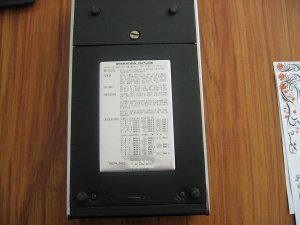
 what were some of the aka
what were some of the aka
